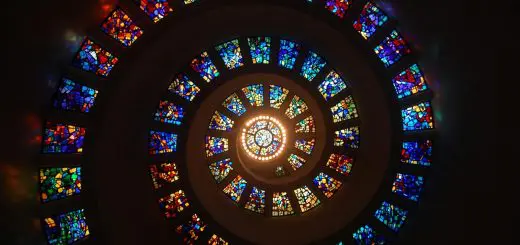Lighting and Color: Illuminating Spaces

Looking for more amazing products? Check out our online store and explore our collection here! Happy shopping!
Before diving in, please note: This post is for informational purposes only. If you’d like to know more about how we approach topics, feel free to check out our friendly Disclaimer Page.
Hey there, amazing readers! 
We’re committed to delivering quality posts, and your support (even just sticking around despite the ads) means everything to us. So, bear with us, and thanks for helping us keep the good vibes rolling. Now, on to the fun stuff!
TRANSLATE BUTTON AT THE END OF THE ARTICLE
A Quick Overview: Importance of Lighting and Color
Lighting and color play a crucial role in interior design, as they can significantly impact the look and feel of a space.
Proper lighting and color choices can enhance the ambiance, mood, and functionality of a room.
Understanding how lighting and color work together can help create a harmonious and inviting environment.
From natural light to artificial lighting sources, each element can be used strategically to illuminate spaces effectively.
Understanding the Impact of Lighting on Spaces
Lighting can affect the perception of space, mood, and overall design of a room.
The type of lighting used can determine whether a space feels warm and cozy or bright and spacious.
Natural light, for example, can make a room feel airy and open, while warm lighting can create a more intimate and inviting atmosphere.
On the other hand, cool lighting can make a room feel larger and more expansive.
Understanding how different lighting options can impact a space is essential in creating a well-balanced design.
Choosing the Right Color Temperature
Color temperature refers to the warmth or coolness of a light source, measured in Kelvin.
Warm light, with a color temperature below 3000K, creates a cozy and welcoming atmosphere.
Cool light, with a color temperature above 4000K, can make a space feel more modern and spacious.
It is essential to consider the color temperature when choosing lighting fixtures to ensure they complement the overall design of the room.
Mixing warm and cool lighting can also create a dynamic and visually appealing environment.
Incorporating Natural Light in Design
Natural light is a valuable resource in interior design, as it can brighten up a space and make it feel more inviting.
Maximizing natural light through strategically placed windows, skylights, and reflective surfaces can help reduce the need for artificial lighting during the day.
Natural light also provides a connection to the outdoors, creating a sense of openness and tranquility in a room.
Incorporating natural light into the design can enhance the overall ambiance of a space.
Enhancing Mood with Warm Lighting
Warm lighting, such as incandescent or halogen bulbs, can create a cozy and intimate atmosphere in a room.
This type of lighting is perfect for living rooms, bedrooms, and dining areas where a relaxed and inviting ambiance is desired.
Warm lighting can also help create a sense of comfort and warmth, making a space feel more welcoming and enjoyable.
Using dimmer switches with warm lighting fixtures can allow for flexibility in adjusting the lighting levels to suit different activities and moods.
Creating a Sense of Space with Cool Lighting
Cool lighting, such as LED or fluorescent bulbs, can make a room feel more open and spacious.
This type of lighting is ideal for kitchens, bathrooms, and workspaces where a bright and energizing environment is needed.
Cool lighting can enhance productivity and focus, making it a popular choice for task lighting.
Using cool lighting in combination with natural light can create a balanced and well-lit space that is both functional and visually appealing.
Using Accent Lighting to Highlight Features
Accent lighting is a great way to draw attention to specific features or focal points in a room.
This type of lighting can be used to highlight artwork, architectural details, or decorative elements.
Accent lighting can create depth and dimension in a space, adding visual interest and drama.
Track lighting, wall sconces, and recessed lights are popular choices for accent lighting due to their versatility and ability to create a customized lighting scheme.
Mixing accent lighting with ambient and task lighting can help create a layered lighting design that enhances the overall aesthetic of a room.
The Role of Color Psychology in Design
Color psychology plays a significant role in interior design, as different colors can evoke specific emotions and moods.
Warm colors like red, orange, and yellow can create a sense of energy and warmth, while cool colors like blue, green, and purple can promote relaxation and tranquility.
Understanding how color influences perception can help in selecting the right color palette for a room.
By incorporating colors that align with the desired mood and function of a space, designers can create a harmonious and visually appealing environment.
Harmonizing Lighting and Color in a Room
Harmonizing lighting and color in a room involves creating a cohesive and balanced design that enhances the overall ambiance.
By coordinating the color temperature of lighting fixtures with the color scheme of the room, designers can achieve a unified and harmonious look.
Warm lighting pairs well with warm colors like earth tones, while cool lighting complements cool colors like blues and greens.
Using accent lighting to highlight specific colors or elements in a room can further enhance the design.
By carefully considering the interaction between lighting and color, designers can create a visually stunning and well-balanced space.
Improving Productivity with Proper Lighting
Proper lighting is essential for creating a productive and efficient work environment.
Bright, cool lighting can help promote focus and alertness, making it ideal for home offices, study areas, and workspaces.
Task lighting, such as desk lamps or under-cabinet lighting, can provide targeted illumination for specific tasks.
Natural light is also beneficial for boosting mood and productivity, so incorporating windows or skylights into a workspace is recommended.
By ensuring adequate lighting levels and minimizing glare, designers can create a conducive environment for work and productivity.
Tips for Illuminating Small Spaces
Illuminating small spaces can be challenging, but with the right lighting strategies, even compact rooms can feel bright and spacious.
Here are some tips for illuminating small spaces effectively:
Use recessed lighting to save space and provide ambient lighting without cluttering the ceiling.
Incorporate wall sconces or floor lamps to add additional sources of light and create a layered lighting scheme.
Choose light-colored walls and furnishings to reflect light and make the room feel larger.
Opt for adjustable lighting fixtures, such as track lights or swing-arm lamps, to direct light where it is needed most.
Consider using mirrors to maximize natural light and create the illusion of a larger space.
By implementing these tips and techniques, designers can enhance the illumination of small spaces and create a bright and inviting environment.
Conclusion: Achieving Balance in Lighting Design
In conclusion, lighting and color are essential elements in interior design that can significantly impact the look and feel of a space.
By understanding the impact of different lighting options, choosing the right color temperature, and incorporating natural light into the design, designers can create a harmonious and visually appealing environment.
Using warm lighting to enhance mood, cool lighting to create a sense of space, and accent lighting to highlight features can further elevate the design of a room.
By harmonizing lighting and color, improving productivity with proper lighting, and implementing effective illumination strategies for small spaces, designers can achieve a well-balanced and inviting space that meets both aesthetic and functional needs.
Ultimately, striking the right balance between lighting and color is key to illuminating spaces and creating a welcoming atmosphere for occupants.

The Enlightenment Journey is a remarkable collection of writings authored by a distinguished group of experts in the fields of spirituality, new age, and esoteric knowledge.
This anthology features a diverse assembly of well-experienced authors who bring their profound insights and credible perspectives to the forefront.
Each contributor possesses a wealth of knowledge and wisdom, making them authorities in their respective domains.
Together, they offer readers a transformative journey into the realms of spiritual growth, self-discovery, and esoteric enlightenment.
The Enlightenment Journey is a testament to the collective expertise of these luminaries, providing readers with a rich tapestry of ideas and information to illuminate their spiritual path.
Our Diverse Expertise
While our primary focus is on spirituality and esotericism, we are equally passionate about exploring a wide range of other topics and niches 

To ensure we provide the most accurate and valuable insights, we collaborate with trusted experts in their respective domains 
Our blog originally focused on spirituality and metaphysics, but we’ve since expanded to cover a wide range of niches. Don’t worry—we continue to publish a lot of articles on spirituality! Frequently visit our blog to explore our diverse content and stay tuned for more insightful reads.
Hey there, amazing reader! 
Check out our store here and take a peek at some of our featured products below! Thanks for being awesome!













